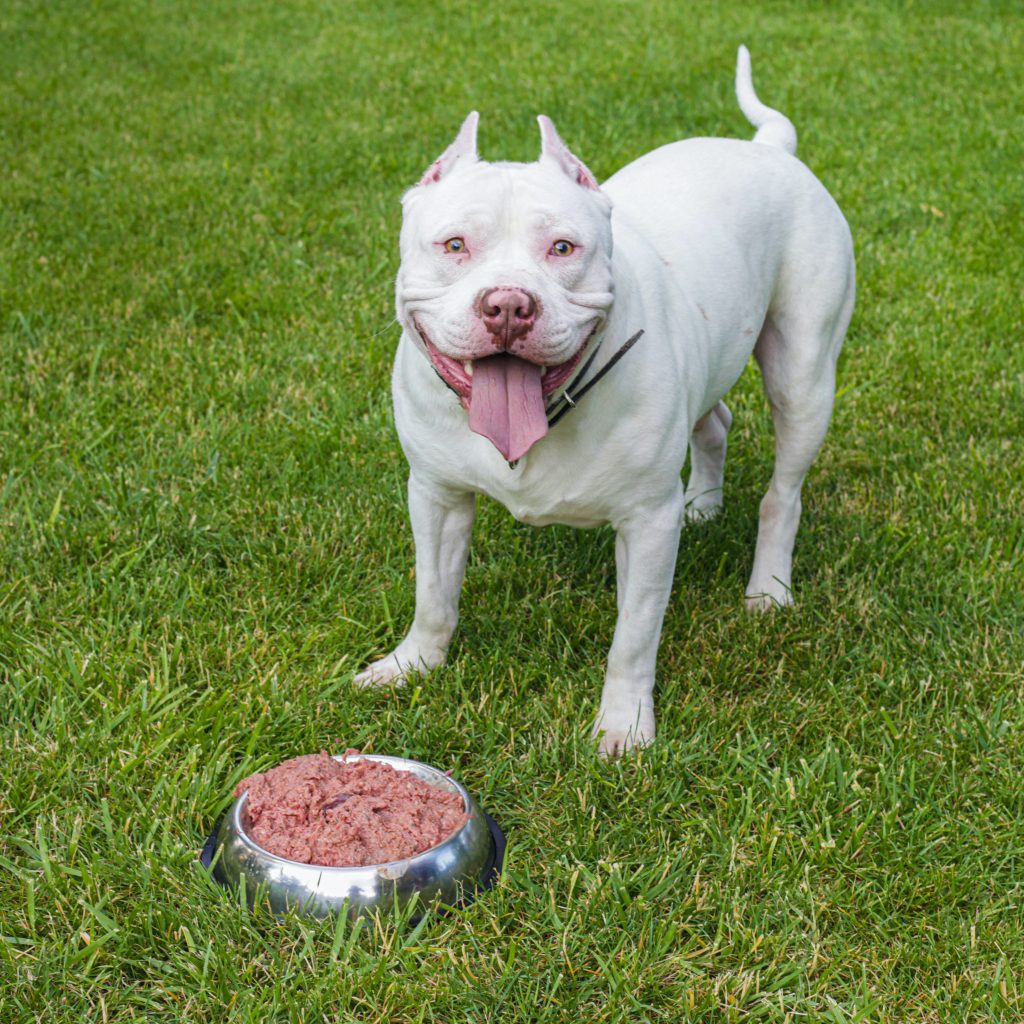The Ultimate Guide to Dog Food – Everything You Need to Know
As a responsible pet owner, you want to ensure that your dog is healthy, happy, and well-nourished. One of the most important factors in achieving this is feeding them high-quality dog food that meets their nutritional needs. With so many options on the market, it can be overwhelming to choose the right food for your furry friend. In this ultimate guide to dog food, we’ll cover everything you need to know to make an informed decision about what to feed your dog.
Table of Contents
- Understanding Your Dog’s Nutritional Needs
- Protein
- Fats
- Carbohydrates
- Vitamins and Minerals
- Types of Dog Food
- Dry Food
- Wet Food
- Semi-Moist Food
- Homemade Food
- Raw Food
- How to Choose the Right Dog Food
- Reading Labels
- Identifying High-Quality Ingredients
- Avoiding Harmful Ingredients
- Considering Your Dog’s Age, Breed, and Health
- How to Transition Your Dog to a New Food
- Slow and Steady Transition
- Monitoring Your Dog’s Reaction
- Common Dog Food-Related Health Issues
- Obesity
- Food Allergies
- Dental Problems
- Conclusion
- FAQs
Understanding Your Dog’s Nutritional Needs
Before we dive into the types of dog food available, it’s essential to understand your dog’s nutritional needs. Just like humans, dogs require a balanced diet to maintain their health and wellbeing. A balanced diet for dogs includes protein, fats, carbohydrates, vitamins, and minerals.
Protein
Protein is a vital component of a dog’s diet, as it helps build and repair muscle, tissue, and organs. Protein also helps maintain healthy skin and a shiny coat. A high-quality dog food should contain a source of animal protein, such as chicken, beef, or fish.
Fats
Fats provide your dog with energy and help absorb essential vitamins. Fats also help maintain healthy skin and coat. Look for a dog food that contains healthy fats, such as omega-3 and omega-6 fatty acids.
Carbohydrates
Carbohydrates are a good source of energy for dogs. However, some dogs may have trouble digesting certain types of carbohydrates, such as wheat or corn. Look for a dog food that contains easily digestible carbohydrates, such as sweet potatoes or brown rice.
Vitamins and Minerals
Vitamins and minerals are essential for your dog’s overall health and wellbeing. Look for a dog food that contains a variety of vitamins and minerals, such as vitamin A, vitamin E, calcium, and phosphorus.
Types of Dog Food
Now that you understand your dog’s nutritional needs let’s take a closer look at the different types of dog food available.
Dry Food
Dry dog food is the most commonly used type of dog food. It’s affordable, easy to store, and has a long shelf life. Dry dog food comes in various sizes, shapes, and flavors, making it easy to find a product that suits your dog’s needs.
Wet Food
Wet dog food is a good option for dogs who have trouble chewing or swallowing dry food. Wet dog food typically contains more moisture than dry food, making it a good choice for dogs who don’t drink enough water.
Semi-Moist Food
Semi-moist dog food is similar to wet dog food in terms of moisture, but it has a texture more like dry dog food. It’s also more convenient to serve than wet food since it doesn’t require refrigeration.
Homemade Food
Homemade dog food is a good option for pet owners who want complete control over what their dog eats. However, it’s essential to ensure that your homemade dog food provides all the necessary nutrients your dog needs.
Raw Food
Raw dog food consists of uncooked meat, bones, fruits, and vegetables. Proponents of raw dog food believe that it’s more natural and healthier for dogs. However, it’s essential to take precautions to prevent bacterial contamination when feeding raw food.
How to Choose the Right Dog Food
Choosing the right dog food can be overwhelming, but there are a few key factors to consider.
Reading Labels
The first step in choosing the right dog food is to read the label carefully. Look for a dog food that lists a high-quality protein source as the first ingredient. Avoid dog foods that contain fillers, artificial colors, or preservatives.
Identifying High-Quality Ingredients
High-quality dog food should contain real meat as the main ingredient. It should also include vegetables and fruits for added nutrients.
Avoiding Harmful Ingredients
Some ingredients commonly found in dog food can be harmful to dogs, such as artificial sweeteners, flavorings, and colors. Be sure to avoid these ingredients when selecting dog food.
Considering Your Dog’s Age, Breed, and Health
The type of dog food your dog needs can vary based on their age, breed, and health. Puppies and senior dogs have different nutritional needs than adult dogs. Large breed dogs may require a different type of dog food than small breed dogs.
How to Transition Your Dog to a New Food
When transitioning your dog to a new food, it’s essential to do so gradually to avoid upsetting their stomach.
Slow and Steady Transition
Start by mixing a small amount of the new food with your dog’s current food. Gradually increase the amount of new food and decrease the amount of old food over several days.
Monitoring Your Dog’s Reaction
Monitor your dog’s reaction to the new food. If they experience diarrhea, vomiting, or other digestive issues, consult your veterinarian.
Common Dog Food-Related Health Issues
Feeding your dog the wrong type of food or poor-quality food can lead to various health issues.
Obesity
Obesity is a common problem in dogs and can lead to other health issues, such as joint problems and diabetes. To prevent obesity, feed your dog a balanced diet and monitor their calorie intake.
Food Allergies
Some dogs may be allergic to certain ingredients found in dog food. Common allergens include wheat, corn, and soy. If your dog has food allergies, consult your veterinarian to determine the best type of food for them.
Dental Problems
Poor-quality dog food can contribute to dental problems, such as plaque buildup and tooth decay. Feeding your dog high-quality dry food or providing them with dental chews can help maintain healthy teeth and gums.
Conclusion
Choosing the right dog food is essential for your dog’s health and wellbeing. Consider your dog’s nutritional needs, age, breed, and health when selecting a dog food. Reading labels, identifying high-quality ingredients, and avoiding harmful ingredients are all important factors to consider. Remember to transition your dog to a new food slowly and monitor their reaction. By following these tips, you can ensure that your furry friend is well-nourished and healthy.
FAQs
Q: What is the best type of dog food?
A: The best type of dog food is one that meets your dog’s nutritional needs and is made with high-quality ingredients. Whether you choose dry, wet, semi-moist, homemade, or raw dog food, it’s essential to read the label carefully and avoid harmful ingredients.
Q: Can I feed my dog homemade food?
A: Yes, you can feed your dog homemade food, but it’s essential to ensure that it provides all the necessary nutrients your dog needs. Consult your veterinarian for guidance on creating a homemade diet for your dog.
Q: What should I do if my dog has a food allergy?
A: If you suspect your dog has a food allergy, consult your veterinarian, who may recommend a hypoallergenic diet or an elimination diet to identify the allergen.
Q: How much should I feed my dog?
A: The amount of food your dog needs depends on their age, breed, and activity level. Consult your veterinarian for guidance on the appropriate portion sizes for your dog.
Q: How do I transition my dog to a new food?
A: To transition your dog to a new food, start by mixing a small amount of the new food with your dog’s current food. Gradually increase the amount of new food and decrease the amount of old food over several days. Monitor your dog’s reaction to the new food and consult your veterinarian if they experience any digestive issues.
Access More pet care, pet supplies, pet medicine and pet food information:
Pet Food | Find the best pet food for your furry friend
Why Pets Make the Best Therapy Companions

